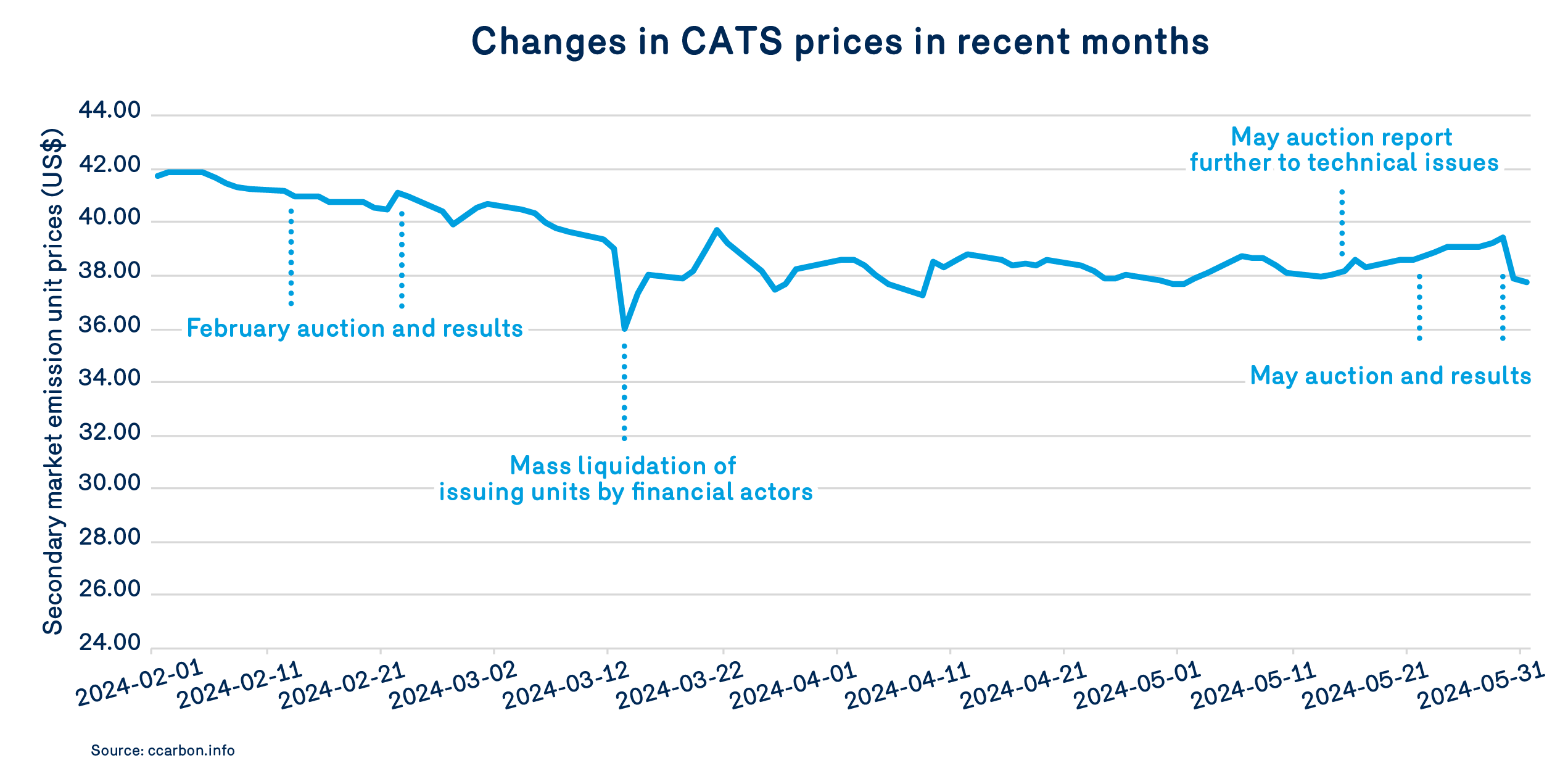CATS Price Trends — As at May 31, 2024
The upward trend on the secondary market observed throughout 2023 continued through February 2024, with the price of emission units peaking at US$41.91 on February 5, 2024.
The price of emission units then dropped suddenly, reaching US$35.84 on March 13, 2024. This unexpected decrease would have been mainly caused by the massive liquidation of options on the secondary market just before their maturity on March 15, 2024, which generated downward pressure in the secondary market. Rapid price increases were then observed, although not to the level previously reached in 2024.
Some market volatility persists, fuelled by the lack of additional information released by the governments of California and Québec on revisions to certain regulatory parameters of their respective CATSs.
The market is thus seeing fluctuations that are mainly due to the uncertainty over regulatory changes for compliance entities. External macroeconomic factors (e.g. interest and inflation rates), although still present, have had a reduced impact on the secondary market.
On the day of the May 22, 2024 auction, prices were around US$38.72.

May 2024 auction results
The second auction of the year, originally scheduled for May 15, 2024, was postponed due to technical issues and held on May 22 (notice in French).The final sale price of emission units for the current vintage was set at US$37.02 (CAN$50.53), while the price for the future vintage was set at US$38.35 (CAN$52.34). The ratios of accepted offers to the number of units put up for sale were 155% (current vintage) and 215% (future vintage).
These ratios indicate relatively strong market demand for emission units, particularly for the future vintage.
Detailed results are available here.
Assessment of CATS operating parameters: consultations ongoing in California
The Government of Québec has ended its public consultations and announced the postponement to September 2024 of the publication of a preliminary version of draft regulations that revise certain parameters of the CATS regulations, and to December 2024 for a regulatory enactment or any other legislative instrument.
Details of all the consultations are available on the Government of Québec website (French).
The Government of California also held workshops in April and May 2024 that continued to present possible regulatory amendments. These latest disclosures, in particular the fact that they reveal so little important information, disappointed a number of participants. The topics discussed included methodologies for calculating GHG emissions, the scope of emissions to be covered by certain regulated sectors, and free allocation rules for some regulated emitters in California. The upcoming changes that were presented could eventually drive emission unit prices upwards.
The objective is to ensure the long-term relevance of the CATS and to make sure that it remains an effective tool for achieving the 2030 target for greenhouse gas emission reductions and for ensuring carbon neutrality

